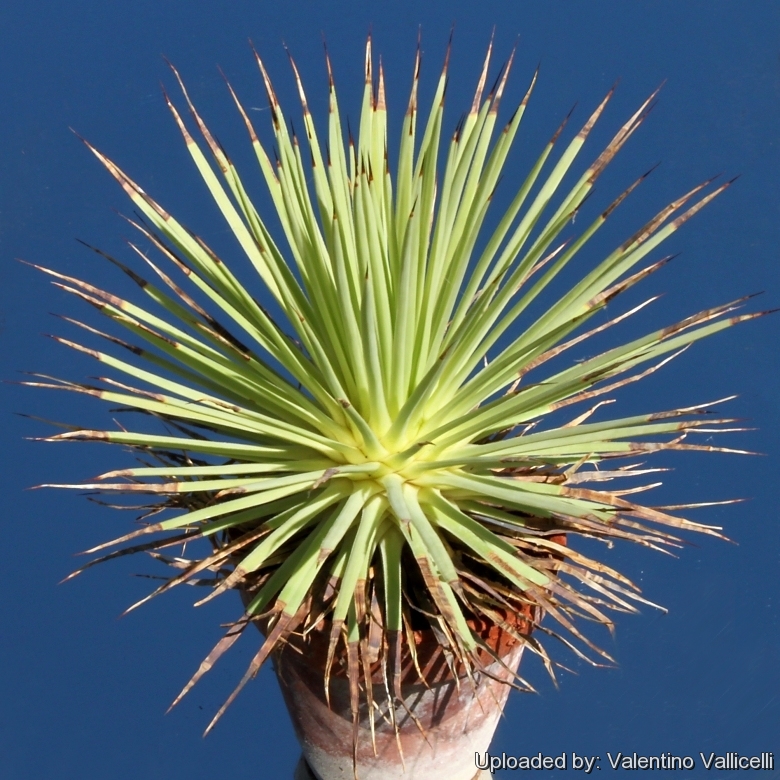
Agave striata f. minima Photo by: Valentino Vallicelli
(Dwarf Needle Agave) It is a dwarf plant that looks quite different from the wider leafed agaves with its long, very narrow, gray green leaves that can reach only 10-15 cm tall. The leaves are quite stiff and delightfully painful.
Origin and Habitat: Mexico (coahuilia, Nuevo Leon, Tamaulipas, Durango, Zacatecas, San Luis Potosi, Queretaro, puebla)
The 'minima' form is probably a nursery produced cultivar.
Habitat: It is limited to drier valleys and plains, with rainfall /year less than 500 mm.
Ecology: It is one of the few non-monocarpic agaves. The initial rosettes, after the flower stalks finish blooming in mid-summer, branch and continue to grow, eventually creating a stack of porcupine-like balls.
Synonyms:
See all synonyms of Agave striata
back
Accepted name in llifle Database:Agave striata f. minima
Accepted name in llifle Database:Agave striata Zucc.Nova Acta Phys.-Med. Acad. Caes. Leop.-Carol. Nat. Cur. 16(2): 678. 1833Synonymy: 6
Accepted name in llifle Database:Agave striata var. californica (Jacobi) A.Terracc. in A.Terracc.Prim. Contr. Monogr. Agave 16. 1885Synonymy: 2
back
Common Names include:
ENGLISH: Dwarf Needle Agave
SPANISH (Español): Espadin
Description: Agave striataSN|568]]SN|562]] is a dense, suckering rosette succulent with unique spiny pencil-like foliage, with nice spherical growth that branch profusely from the base. Older clumps can be to 2-3 m broad. Due to the wide area of distribution, this species shows many different forms, particularly for general habit and leaf form, and to a lesser extent in flower structure. It very similar to Agave strictaSN|562]]SN|568]], and can be easily confused with a Yucca.
On the contrary the A. striata "minima" – here described - is a dwarf plant that only reach a maximum size of 15-25 cm.
Stem: Very short.
Leaves: Very numerous, linear, straight to arching, rather turgid, convex above, smooth or scabrous along the keels and below, with no marginal spines, 25-100 cm long, pale-green, silvery-grey or rusty, that turn a dark purplish-brownish apically below the terminal spine.
Spine: One apical, subulate, very pungent, about 1-5 cm long, dark reddish-brown or grey.
Inflorescence: Erect 1,5-2,5 km tall, rather laxly flowered. Flowers greenish-yellow to purplish in fall.
Subspecies, varieties, forms and cultivars of plants belonging to the Agave striata complex-group
- Agave striata Zucc.: Dense, suckering rosette succulent with unique spiny pencil-like foliage, with nice spherical growth that branch profusely from the base. It very similar to Agave stricta, and can be easily confused with a Yucca.
- Agave striata var. californica (Jacobi) A.Terracc. in A.Terracc.
 Agave striata f. minima: Dwarf plant that only reach a maximum size of 15-25 cm.
Agave striata f. minima: Dwarf plant that only reach a maximum size of 15-25 cm. Agave stricta Salm-Dyck: Forms large individual rosettes, with hundreds of thin leaves, 30 to 100 cm in height and width. This species has the tightest spherical shape of any agave and looks like a very nasty porcupine. .
Agave stricta Salm-Dyck: Forms large individual rosettes, with hundreds of thin leaves, 30 to 100 cm in height and width. This species has the tightest spherical shape of any agave and looks like a very nasty porcupine. . Agave stricta f. nana Minas Asbestos: It is a very small selection that forms a compact spherical rosette, with many stiff, very narrow, glaucous-blue linear leaves. Will form offshoots to create a colony of rosettes.
Agave stricta f. nana Minas Asbestos: It is a very small selection that forms a compact spherical rosette, with many stiff, very narrow, glaucous-blue linear leaves. Will form offshoots to create a colony of rosettes. Agave stricta f. rubra hort.: (a.k.a. Red form) it has thin red longitudinal lines on the leaves. The red colouratin enhances under stress condition (drought, strong sun and cold expecially in winter)
Agave stricta f. rubra hort.: (a.k.a. Red form) it has thin red longitudinal lines on the leaves. The red colouratin enhances under stress condition (drought, strong sun and cold expecially in winter)
 Agave striata f. minima Photo by: Cactus Art
Agave striata f. minima Photo by: Cactus Art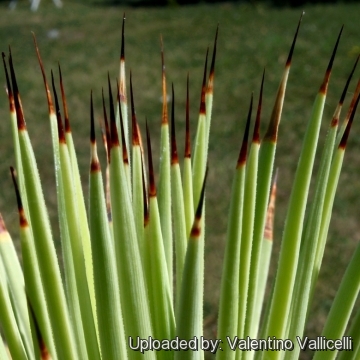 Agave striata f. minima Photo by: Valentino Vallicelli
Agave striata f. minima Photo by: Valentino Vallicelli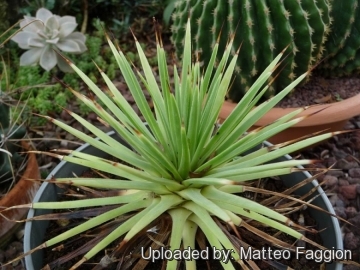 Agave striata f. minima Photo by: Matteo Faggion
Agave striata f. minima Photo by: Matteo Faggion Agave striata f. minima Photo by: Valentino Vallicelli
Agave striata f. minima Photo by: Valentino Vallicelli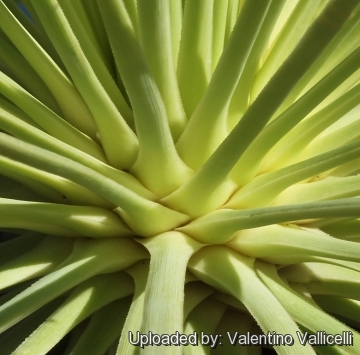 Agave striata f. minima Photo by: Valentino Vallicelli
Agave striata f. minima Photo by: Valentino Vallicelli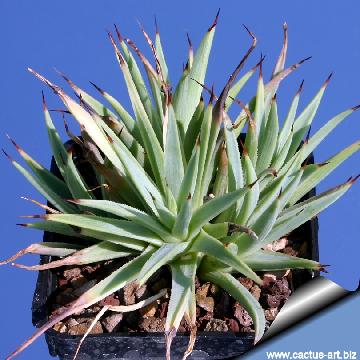 Agave striata f. minima Photo by: Cactus Art
Agave striata f. minima Photo by: Cactus Art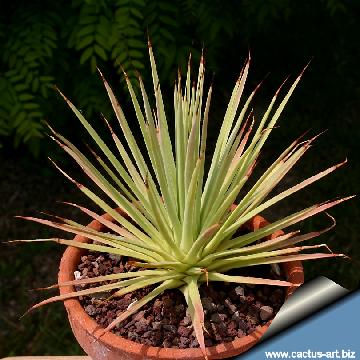 Agave striata f. minima Photo by: Cactus Art
Agave striata f. minima Photo by: Cactus Art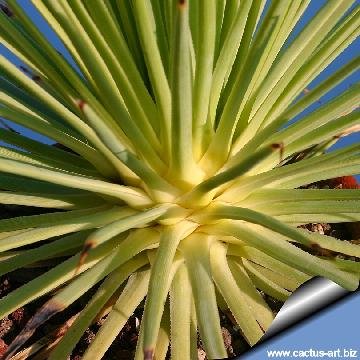 Agave striata f. minima Photo by: Cactus Art
Agave striata f. minima Photo by: Cactus ArtCultivation and Propagation: A. striata nana is a versatile and very hardy plant that can be grown in half-shade to full-sun. It can take moderate to severe freezes, and is extremely drought tolerant. It tends to be more slow-growing than the standard species plant, hence the price. In winter watering this plant can be done once every 1-2 months, there is no need to mist the leaves. Agave striataSN|562]]SN|562]] is theoretically hardy to -3° C. Particularly when dry but it is best to avoid severe freezing temperatures. Heat Tolerance: Excellent.
Propagation:: Relatively easy to propagate by by suckers (if available) Remove the basal suckers in spring or summer and let the cuttings dry for a few days before inserting in compost.
Your Photos
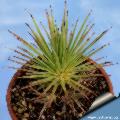
by Cactus Art
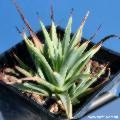
by Cactus Art
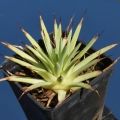
by Valentino Vallicelli





















